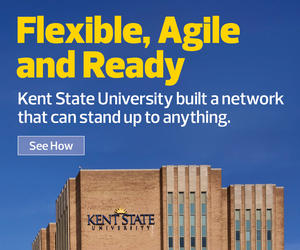Google has meanwhile been supporting community colleges in their efforts to expand certification programs. Technology undergirds the upskilling effort, says Steven Butschi, head of education at Google Cloud.
“It’s been exciting to see institutions innovate to ensure they are meeting the needs of students and their institutions,” Butschi says. “We’ve seen that pace of innovation accelerating recently as institutions have risen to the many unprecedented challenges they face and seized new opportunities to improve.”
By adding and expanding skills and certificate programs, “institutions can meet student needs, help increase the sustainability of their institutions and help society by filling gaps for critical jobs,” he says.
Technology plays a key role in making that happen.
EXPLORE: Six emerging technology trends in higher education.
How the Right Technology Helps Upskilling Efforts
At Kent State, a range of recent upgrades support upskilling.
Leveraging funding from the Coronavirus Aid, Relief and Economic Security Act, the school worked with CDW•G and Aruba to install 48-port Aruba CX 8325 switches with 100Gbps line-rate interfaces. They implemented Aruba 7000 Series controllers in conjunction with Aruba Mobility Master, a master controller capable of handling up to 10,000 access points at a time, and added two management solutions: Aruba NetEdit and Aruba AirWave.
“We want to be able to provide an experience that supports an ‘any location, any time, any type of content’ capability for our students, our faculty, staff and our researchers. That means the network has to be prepared to move with us in that direction,” Rathje says.
“These upgrades give us greater capacity, greater speeds, and they also give us greater flexibility to create experiences based on location and context,” he continues. “The network is prepared for groups of people to congregate and also move seamlessly from one location to another.”
San Joaquin Valley College likewise worked with CDW•G, Apple and Meraki on a one-to-one device rollout, deploying iPad devices in support of upskilling across its 17 campuses. The effort also included deployment of about 350 wireless APs, as reported in a recent CDW case study.













